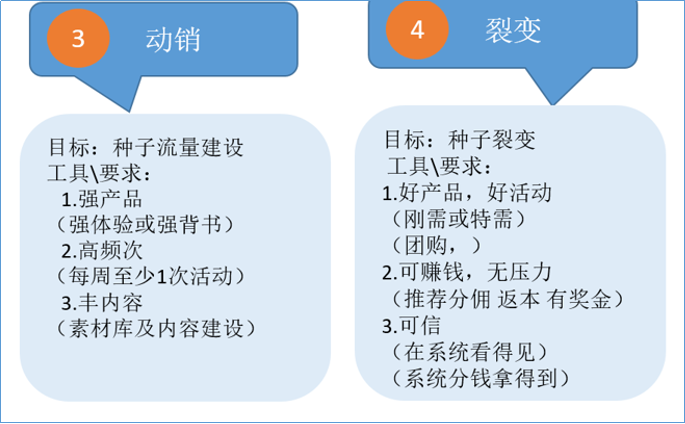1、栈
1.1 栈的概念及结构
栈:一种特殊的线性表,其只允许在固定的一端进行插入和删除元素操作。进行数据插入和删除操作的一端称为栈顶,另一端称为栈底。栈中的数据元素遵守后进先出LIFO(Last In First Out)的原则。
压栈:栈的插入操作叫做进栈/压栈/入栈,入数据在栈顶。
出栈:栈的删除操作叫做出栈。出数据也在栈顶。

1.2 栈的实现
栈的实现一般可以使用数组或者链表实现,相对而言数组的结构实现更优一些。因为数组在尾上插入数据的代价比较小。


1.2.1 Stack.h
#pragma once
#include <stdio.h>
#include <assert.h>
#include <stdlib.h>
#include <stdbool.h>
typedef int STDataType;
typedef struct Stack
{
STDataType* a;
int top;//栈顶
int capacity;//容量
}ST;
//初始化
void STInit(ST* pst);
//销毁
void STDestroy(ST* pst);
//入栈
void STPush(ST* pst, STDataType x);
//出栈
void STPop(ST* pst);
//获取栈顶元素
STDataType STTop(ST* pst);
//判断是否为空
bool STEmpty(ST* pst);
//获取栈中有效元素的个数
int STSize(ST* pst);1.2.2 Stack.c
#define _CRT_SECURE_NO_WARNINGS 1
#include "Stack.h"
void STInit(ST* pst)
{
assert(pst);
pst->a = NULL;
pst->top = 0;
pst->capacity = 0;
}
void STDestroy(ST* pst)
{
assert(pst);
free(pst->a);
pst->a = NULL;
pst->top = 0;
pst->capacity = 0;
}
void STPush(ST* pst, STDataType x)
{
assert(pst);
if (pst->top == pst->capacity)
{
int newcapacity = pst->capacity == 0 ? 4 : pst->capacity * 2;
STDataType* tmp = (STDataType*)realloc(pst->a, newcapacity * sizeof(STDataType));
if (NULL == tmp)
{
perror("realloc");
return;
}
pst->a = tmp;
pst->capacity = newcapacity;
}
pst->a[pst->top] = x;
pst->top++;
}
void STPop(ST* pst)
{
assert(pst);
assert(!STEmpty(pst));
pst->top--;
}
STDataType STTop(ST* pst)
{
assert(pst);
assert(!STEmpty(pst));
return pst->a[pst->top - 1];
}
bool STEmpty(ST* pst)
{
assert(pst);
return pst->top == 0;
}
int STSize(ST* pst)
{
assert(pst);
return pst->top;
}1.2.3 test.c
#define _CRT_SECURE_NO_WARNINGS 1
#include "Stack.h"
void TestStack1()
{
ST st;
STInit(&st);
STPush(&st, 1);
STPush(&st, 2);
STPush(&st, 3);
printf("%d\n", STTop(&st));
STPop(&st);
STPush(&st, 4);
STPush(&st, 5);
while (!STEmpty(&st))
{
printf("%d ", STTop(&st));
STPop(&st);
}
STDestroy(&st);
}
int main()
{
TestStack1();
return 0;
}
2、队列
2.1 队列的概念及结构
队列:只允许在一端进行插入数据操作,在另一端进行删除数据操作的特殊线性表,队列具有先进先出FIFO(First In First Out) 的性质。
进行插入操作的一端称为队尾,进行删除操作的一端称为队头。

2.2 队列的实现
队列也可以数组和链表的结构实现,使用链表的结构实现更优一些,因为如果使用数组的结构,出队列在数组头上出数据,效率会比较低。

2.2.1 Queue.h
#pragma once
#include <stdio.h>
#include <stdlib.h>
#include <assert.h>
#include <stdbool.h>
typedef int QDataType;
typedef struct QueueNode
{
QDataType data;
struct QueueNode* next;
}QNode;
typedef struct Queue
{
QNode* phead;
QNode* ptail;
int size;
}Queue;
//初始化
void QueueInit(Queue* pq);
//销毁
void QueueDestroy(Queue* pq);
//队尾入队列
void QueuePush(Queue* pq, QDataType x);
//队头出队列
void QueuePop(Queue* pq);
//获取队头元素
QDataType QueueFront(Queue* pq);
//获取队尾元素
QDataType QueueBack(Queue* pq);
//获取队列中有效元素个数
int QueueSize(Queue* pq);
//检测队列是否为空
bool QueueEmpty(Queue* pq);2.2.2 Queue.c
#define _CRT_SECURE_NO_WARNINGS 1
#include "Queue.h"
void QueueInit(Queue* pq)
{
assert(pq);
pq->phead = NULL;
pq->ptail = NULL;
pq->size = 0;
}
void QueueDestroy(Queue* pq)
{
assert(pq);
QNode* cur = pq->phead;
while (cur)
{
QNode* next = cur->next;
free(cur);
cur = next;
}
pq->phead = pq->ptail = NULL;
pq->size = 0;
}
void QueuePush(Queue* pq, QDataType x)
{
assert(pq);
QNode* newnode = (QNode*)malloc(sizeof(QNode));
if (NULL == newnode)
{
perror("malloc");
return;
}
newnode->data = x;
newnode->next = NULL;
if (pq->phead == NULL)
{
pq->phead = pq->ptail = newnode;
}
else
{
pq->ptail->next = newnode;
pq->ptail = newnode;
}
pq->size++;
}
void QueuePop(Queue* pq)
{
assert(pq);
assert(!QueueEmpty(pq));
if (pq->phead->next == NULL)
{
free(pq->phead);
pq->phead = pq->ptail = NULL;
}
else
{
QNode* next = pq->phead->next;
free(pq->phead);
pq->phead = next;
}
pq->size--;
}
QDataType QueueFront(Queue* pq)
{
assert(pq);
assert(!QueueEmpty(pq));
return pq->phead->data;
}
QDataType QueueBack(Queue* pq)
{
assert(pq);
assert(!QueueEmpty(pq));
return pq->ptail->data;
}
int QueueSize(Queue* pq)
{
assert(pq);
return pq->size;
}
bool QueueEmpty(Queue* pq)
{
assert(pq);
return pq->size == 0;
}test.c
#define _CRT_SECURE_NO_WARNINGS 1
#include "Queue.h"
void TestQueue()
{
Queue q;
QueueInit(&q);
QueuePush(&q, 4);
QueuePush(&q, 3);
QueuePush(&q, 2);
QueuePush(&q, 1);
QueuePop(&q);
while (!QueueEmpty(&q))
{
printf("%d ", QueueFront(&q));
QueuePop(&q);
}
QueueDestroy(&q);
}
int main()
{
TestQueue();
return 0;
}3、栈和队列练习题
3.1 括号匹配问题
20. 有效的括号 - 力扣(LeetCode)
bool isValid(char* s)
{
ST st;
STInit(&st);
while(*s)
{
if(*s=='('
|| *s=='['
|| *s=='{')
{
STPush(&st,*s);
}
else
{
if(STEmpty(&st))
{
STDestroy(&st);
return false;
}
else
{
char top=STTop(&st);
STPop(&st);
if(*s==']'&&top!='['
|| *s==')'&&top!='('
|| *s=='}'&&top!='{')
{
STDestroy(&st);
return false;
}
}
}
++s;
}
bool ret=STEmpty(&st);
STDestroy(&st);
return ret;
}3.2 用队列实现栈
225. 用队列实现栈 - 力扣(LeetCode)
typedef struct
{
Queue* q1;
Queue* q2;
} MyStack;
MyStack* myStackCreate()
{
MyStack* obj = (MyStack*)malloc(sizeof(MyStack));
obj->q1 = (Queue*)malloc(sizeof(Queue));
obj->q2 = (Queue*)malloc(sizeof(Queue));
QueueInit(obj->q1);
QueueInit(obj->q2);
return obj;
}
void myStackPush(MyStack* obj, int x) {
if (!(QueueEmpty(obj->q1)))
{
QueuePush(obj->q1, x);
}
else
{
QueuePush(obj->q2, x);
}
}
int myStackPop(MyStack* obj) {
Queue* pEmpty = obj->q1;
Queue* pNonEmpty = obj->q2;
if (!QueueEmpty(obj->q1))
{
pEmpty = obj->q2;
pNonEmpty = obj->q1;
}
while (QueueSize(pNonEmpty) > 1)
{
QueuePush(pEmpty, QueueFront(pNonEmpty));
QueuePop(pNonEmpty);
}
int top = QueueFront(pNonEmpty);
QueuePop(pNonEmpty);
return top;
}
int myStackTop(MyStack* obj)
{
if (!QueueEmpty(obj->q1))
{
return QueueBack(obj->q1);
}
else
{
return QueueBack(obj->q2);
}
}
bool myStackEmpty(MyStack* obj)
{
return QueueEmpty(obj->q1) && QueueEmpty(obj->q2);
}
void myStackFree(MyStack* obj)
{
QueueDestroy(obj->q1);
QueueDestroy(obj->q2);
free(obj);
}3.3 用栈实现队列
232. 用栈实现队列 - 力扣(LeetCode)
typedef struct
{
ST pushst;
ST popst;
}MyQueue;
MyQueue* myQueueCreate()
{
MyQueue* obj = (MyQueue*)malloc(sizeof(MyQueue));
if (obj == NULL)
{
perror("malloc fail");
return NULL;
}
STInit(&obj->pushst);
STInit(&obj->popst);
return obj;
}
void myQueuePush(MyQueue* obj, int x)
{
STPush(&obj->pushst, x);
}
int myQueuePop(MyQueue* obj)
{
int front = myQueuePeek(obj);
STPop(&obj->popst);
return front;
}
int myQueuePeek(MyQueue* obj)
{
if (STEmpty(&obj->popst))
{
while (!STEmpty(&obj->pushst))
{
STPush(&obj->popst, STTop(&obj->pushst));
STPop(&obj->pushst);
}
}
return STTop(&obj->popst);
}
bool myQueueEmpty(MyQueue* obj)
{
return STEmpty(&obj->pushst) && STEmpty(&obj->popst);
}
void myQueueFree(MyQueue* obj)
{
STDestroy(&obj->pushst);
STDestroy(&obj->popst);
free(obj);
}3.4 设计循环队列
622. 设计循环队列 - 力扣(LeetCode)

typedef struct
{
int front;
int rear;
int k;//队列长度,假设为5
int* a;//数组指针
} MyCircularQueue;
//这个函数动态开辟的obj或者数组都是为下面做铺垫的
MyCircularQueue* myCircularQueueCreate(int k)
{
MyCircularQueue* obj = (MyCircularQueue*)malloc(sizeof(MyCircularQueue));
obj->a = (int*)malloc(sizeof(int) * (k + 1));
obj->front = obj->rear = 0;
obj->k = k;
return obj;
}
bool myCircularQueueIsEmpty(MyCircularQueue* obj)
{
return obj->front == obj->rear;
}
bool myCircularQueueIsFull(MyCircularQueue* obj)
{
//(5+1)%(5+1)==0的时候是满的
return (obj->rear + 1) % (obj->k + 1) == obj->front;
}
//向循环队列插入一个元素,如果成功插入则返回真
bool myCircularQueueEnQueue(MyCircularQueue* obj, int value)
{
//如果不是满队列才可以插入
if (myCircularQueueIsFull(obj))
return false;
obj->a[obj->rear] = value;
obj->rear = (obj->rear + 1) % (obj->k + 1);
return true;
}
//从循环队列中删除一个元素,如果成功删除则返回真
bool myCircularQueueDeQueue(MyCircularQueue* obj)
{
if (myCircularQueueIsEmpty(obj))
return false;
obj->front = (obj->front + 1) % (obj->k + 1);
return true;
}
int myCircularQueueFront(MyCircularQueue* obj)
{
if (myCircularQueueIsEmpty(obj))
return -1;
return obj->a[obj->front];
}
int myCircularQueueRear(MyCircularQueue* obj)
{
if (myCircularQueueIsEmpty(obj))
return -1;
return obj->a[((obj->rear - 1) + (obj->k + 1)) % (obj->k + 1)];
}
void myCircularQueueFree(MyCircularQueue* obj)
{
free(obj->a);
free(obj);
}
3.5 选择题
现有一循环队列,其队头指针为front,队尾指针为rear;循环队列长度为N。其队内有效长度为?(假设队头不存放数据)
A (rear - front + N) % N + 1
B (rear - front + N) % N
C (rear - front) % (N + 1)
D (rear - front + N) % (N - 1)
答案是B,代入计算一下就可以



















